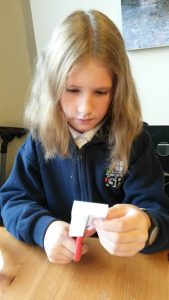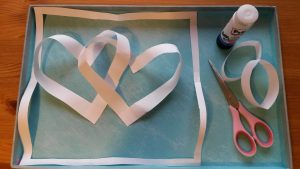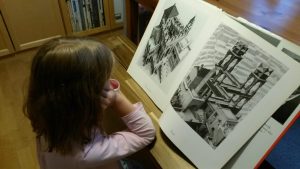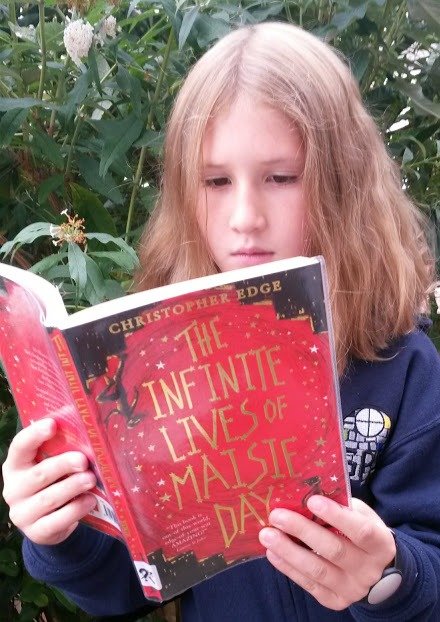These days we see more and more children’s books that combine fiction stories with real science facts. Several authors like Stephen and Lucy Hawking with their George’s Secret key to the Universe series and Christopher Edge with his The Jamie Drake equation really nailed the art of mixing science into imaginary world.
For us, teachers and educators, such books are real gems: they ignite kids imagination, teach them about science and get them curious about how the Universe work.
These books can invite many follow-up activities into our classrooms too, like further research, experiments and, of course, artwork.
This spring a new book from Christopher Edge called “Infinite lives of Maisie Day” was released. It is aimed at 8-12 year olds (UK key stage 2/3 level), but we can safely say that anyone age 8-88 will definitely enjoy it. We did! If you haven’t read it yet, it’s time!
The plot
“…a good scientist only needs to ask two questions about the universe.
What exists and what does it do?…if you can answer these questions, you
have the chance of understanding everything.”
Maisie is not a regular girl. She passed her GCSEs by the age of 7 and is now studying for degree in Mathematics and Physics at the Open University.
Today is Maisie’s 10th Birthday. She wakes up and runs downstairs, anticipating presents and family party. But the house is empty and there is nothing outside the front door, only the blackness that slowly sips in consuming room after room.
Will Maisie’s knowledge of the laws of physics help her find the way out of this nightmare?
Facts in “The infinite lives of Maisie Day” and how to turn them into classroom activities
As we live the impossible day with Maisie, we learn lots of new things along the way: that mass warps space-time, how the Sun makes energy, how the old TV used to work, how to travel through wormholes and many more! All these amazing facts are skillfully woven into a story and explained in a child-friendly language.
You can easily turn some of these explanations into classroom/ family/ group activities, further discussions or a field trip to your local museum.
We shared “Infinite lives of Maisie Day” with our space dome learners age 9-13 and, based on their preferences, chose to discuss the following facts from the book/ do the following activities:
1. The blackest man-made material ever invented
It is something called Vantablack, the material made of tiny carbon nanotubes aligned vertically. When you shine light on Vantablack, it gets trapped inside the forest of tubes and bounces from one nanotube to another until it turns into heat. This way Vantablack absorbs about 99.965% of ultraviolet, visible and infrared light. Coating things with Vantablack is tricky. You don’t just paint things with Vantablack to make them look super-black. You have to grow Vantablack directly on the object at a scorching heat of 400 degrees Celcius. Ouch!
Classroom activity
While growing nanotubes in your classroom might be out of question (i know, health and safety, BO-RING!), you can offer the kids to experiment with the paints (here is how to mix black paint, by the way). Organize the pupils into pairs/ small groups and ask them to develop their own black paint recipe and paint an object with their formula. Let the whole class decide on the winner.
2. Mobius strip
Mobius strip is a surface with one side and one boundary. The easiest way to explain the properties of Mobius strip is to make one. It’s time to play with glue and paper!
Classroom activity

Start with two strips of paper (you can do a demonstration or let each child do this activity). Glue the ends of one strip together to make a straight loop. Now take another strip, give one end a 180 degree twist and then glue the ends together. This is a famous Mobius strip. How are the two loops different? To answer this question do the following experiments and see what happens:
-count the surfaces of each loop
-cut each loop in half along the central line
-cut each loop along “⅓ line”
Ready for more gluing and cutting? Just follow the instructions of the Japanese mathematician Tadashi Tokieda
Part 1: https://www.youtube.com/watch?v=wKV0GYvR2X8
Part 2: https://www.youtube.com/watch?v=mh3eMt09EAs
This task will include gluing together at the right angle the pairs of loops (straight + straight, straight + Mobius, Mobius + Mobius twisted the same and the opposite way) and then cutting each loop in a pair along the central line. The results are amazing and unexpected!

3. M.C. Escher and his art
Escher was a Dutch graphic artist. He is famous for this brain-twisting “impossible” mathematical drawings, like Ascending and Descending mentioned in the “Infinite lives of Maisie Day”. His artwork is permanently displayed in the Escher in the Palace museum in Hague, Netherlands.
Classroom activity

Your pupils will enjoy exploring art books with beautiful Escher’s prints. Let the children investigate the impossible drawings and ask them to figure out what is wrong with the pictures. How about creating your classroom Escher-inspired masterpiece?
We hope you will enjoy reading the “Infinite lives of Maisie Day” and then gluing, cutting and artgazing as much as we did!
If you tried any of our activities or came up with your own projects, please share your experience with our inflatable planetarium blog readers!

